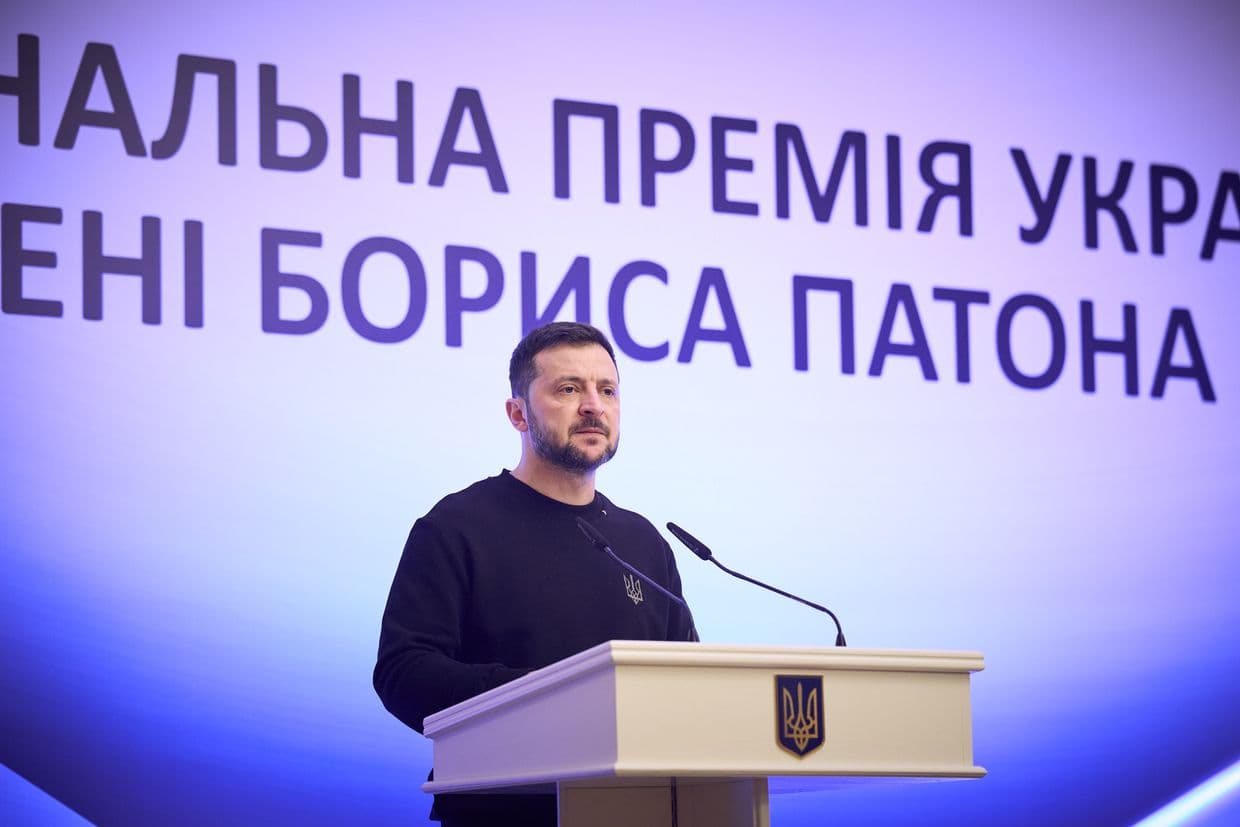Ukraine war latest: Russia continues to suffer record losses in December, Zelensky says

Key developments on Dec. 11:
- Russia continues to suffer record losses in December, Zelensky says
- Ukraine has arms to resist at least until mid-2025 if US cuts aid, finance minister says
- Russian proxies sentence 9 Azovstal defenders to 24 years, life in prison
- Russia may launch new Oreshnik missile against Ukraine in 'coming days,' US intelligence says
Russian forces have incurred record-high casualties in manpower during hostilities in both November and December, President Volodymyr Zelensky said on Dec. 11 after hearing a report from Commander-in-Chief Oleksandr Syrskyi.
Moscow's troops are advancing at a rapid pace in Ukraine's east, pushing back outgunned and outnumbered Ukrainian defenders at the cost of staggering losses.
"As in November, the Russian military is using a record number of its men in December in battles and assaults," Zelensky said on Telegram.
"These months — November and December — saw record Russian losses," the president noted, adding that the Pokrovsk and Kurakhove sectors in Donetsk Oblast remain the active parts of the front.
Ukraine's Defense Ministry said on Dec. 1 that Russian losses throughout November amounted to 45,720 soldiers wounded, killed, or captured, as well as over $3 billion worth of equipment.
November also saw the record broken for the enemy personnel losses in one day with 2,030, the highest figure since Feb. 24, 2022. Ukrainian and Western estimates put Russian losses at between 600,000-750,000 killed, injured, or captured, while Moscow has not disclosed the exact figures.
Despite the losses, Russia holds the upper hand on the battlefield, advancing toward key Donetsk Oblast towns like Pokrovsk and chipping away at the Ukrainian position in the Russian border region of Kursk.
In his post, Zelensky also thanked Ukrainian forces for "tangible hits on Russian targets last night," namely "military facilities on Russian territory" and "energy and fuel facilities."
Earlier today, the General Staff of Ukraine's Armed Forces reported a successful strike against a Druzhba oil pipeline loading station near the Russian city of Bryansk, resulting in a large-scale fire.

Ukraine has arms to resist at least until mid-2025 if US cuts aid, finance minister says
Ukraine has enough funds and ammunition to continue resisting Russia at least throughout the first half of 2025, even if U.S. assistance dries up, Finance Minister Serhii Marchenko said in an interview with the El Pais newspaper published on Dec. 11.
Marchenko's comments come amid growing concern that U.S. President-elect Donald Trump might withdraw Washington's crucial support for Kyiv after he takes office in January.
"I believe that we have enough funds, enough weapons, missiles, and artillery shells to resist at least during the first half of 2025," Marchenko said. Ukraine is allocating necessary funds from its budget to purchase equipment and continues to receive U.S. arms, the minister explained.
"This means that at least during the first half of the year and beyond, we will be well-equipped to resist this aggression," he added.
The outgoing Biden administration has accelerated its weapons deliveries ahead of Trump's inauguration, announcing an arms package worth nearly $1 billion on Dec. 7. Washington has provided Ukraine with over $60 billion in arms and equipment since the outbreak of the full-scale war, making it by far the most important military donor.
The flow of supplies may soon dry up, as Trump recently said that Kyiv could expect a reduction of U.S. assistance after he takes office.
Marchenko noted that the possibility of Trump cutting aid is a "challenge." It is, therefore, in Kyiv's interest to "create the necessary conditions" for cooperation with the new administration, he added.
"We want to build a good relationship," Marchenko said.
President Volodymyr Zelensky met Trump in Paris on Dec. 7 for the first time since the latter's reelection. Reuters wrote that the two did not discuss the specifics of any concrete peace plan, but the Ukrainian president stressed the need for security guarantees.
Marchenko expressed his belief that full NATO membership remains the best possible guarantee to deter Russian aggression, with a "modern and strong Ukrainian military" as the only alternative.
Russian proxies sentence 9 Azovstal defenders to 24 years, life in prison
Russian occupation authorities in Donetsk jailed nine Ukrainian soldiers captured after defending Mariupol to between 24 years and a life sentence, the city's exiled authorities reported on Dec. 11.
Russia often uses trumped-up charges to jail captured Ukrainian soldiers, activists, journalists, and regular civilians for lengthy terms.
Moscow's proxies in Donetsk now sentenced soldiers of the 36th Marine Brigade who fell into Russian hands after a gruesome siege of Mariupol and its Azovstal steel plant in the spring of 2022, the exiled Mariupol City Council said on Telegram.
Andrii Shestak, Nazarii Moroz, Vladyslav Yavorskyi, Vadym Shulha, Serhii Yampolskyi, Maksym Kolbasin, Dmytro Shalara, Volodymyr Penzin, and Kostiantyn Romaniuk will serve their sentences in a high-security prison, according to the statement.
The occupation authorities accused the soldiers of shelling the village of Staryi Krym near Mariupol in March 2022.
Ukraine's former Prosecutor General said that nine out of 10 Ukrainian prisoners of war (POW) are subjected to physical and moral torture. While Ukraine has managed to bring back home some of the captives, including Azovstal defenders, through prisoner exchanges, many more remain in Russian captivity.
Russia may launch new Oreshnik missile against Ukraine in 'coming days,' US intelligence says
Russia may launch its new Oreshnik intermediate-range ballistic missile (IRBM) against Ukraine for the second time "in the coming days," the Associated Press (AP) reported on Dec. 11, citing an unnamed U.S. official.
Russia launched its new intermediate-range ballistic missile at Dnipro in Ukraine on Nov. 21. Russian President Vladimir Putin claimed the strike was in response to Ukraine's use of American and British weapons to target deeper within Russia.
Washington still sees the experimental Oreshnik missile more as "an attempt at intimidation than a game-changer on the battlefield in Ukraine," a U.S. official told reporters on condition of anonymity, referring to a U.S. intelligence assessment.
Russia has only "a handful" of the Oreshnik missiles, and they carry a smaller warhead than other missiles that Russia has regularly launched at Ukraine, AP reported, citing an official.
In early December, the Moscow Times reported, citing four Russian official sources, that the media blitz following the strike on Dnipro was a carefully staged stunt designed to scare off the West.
The Oreshnik is likely not a new Russian development but a modification of the RS-26 missile, also known as the Rubezh, Fabian Hoffmann, a defense expert and doctoral research fellow at the University of Oslo, told the Kyiv Independent.
"I think basically they (Russians) just took apart the RS-26 or just cannibalized it, and then put together this new missile with a couple of upgrades, and a new paint job."
First produced in 2011, and successfully tested in 2012, the Rubezh is a 36,000 kilogram, nuclear capable, intermediate-range ballistic missile with a known range of 5,800 kilometers.












